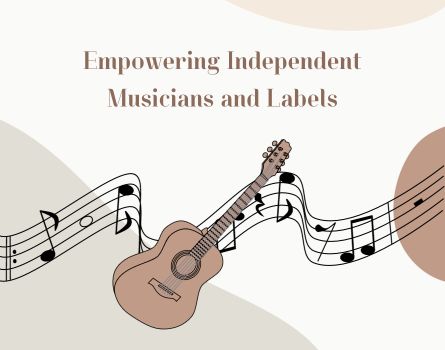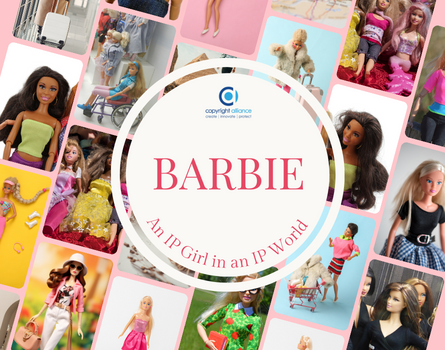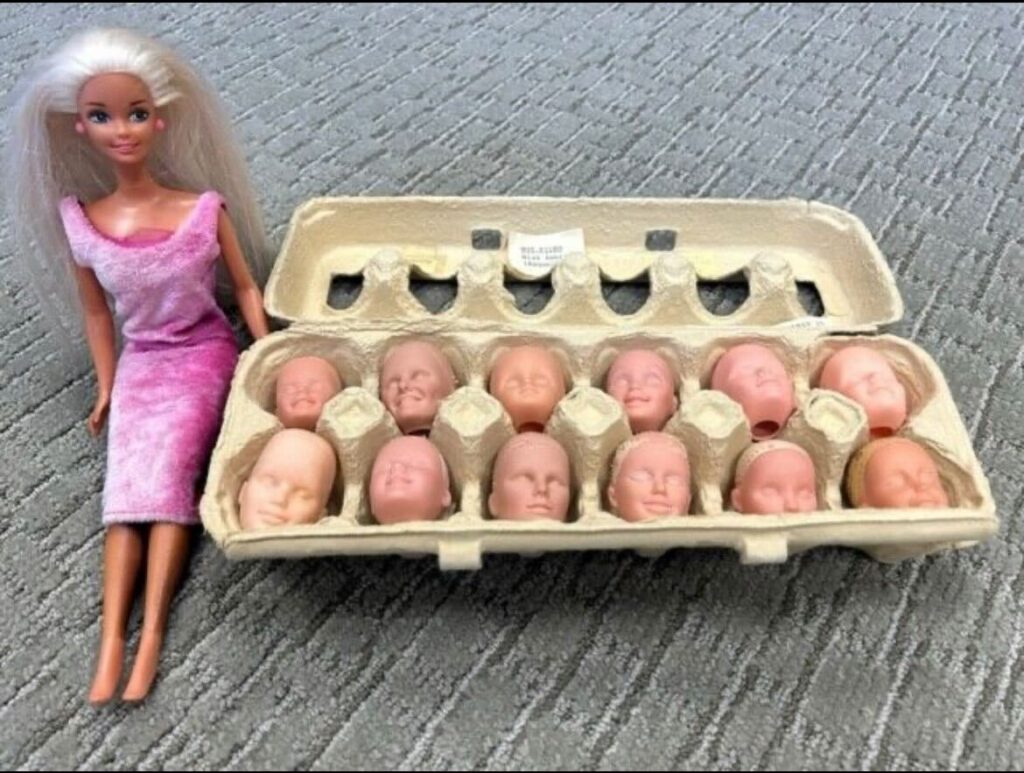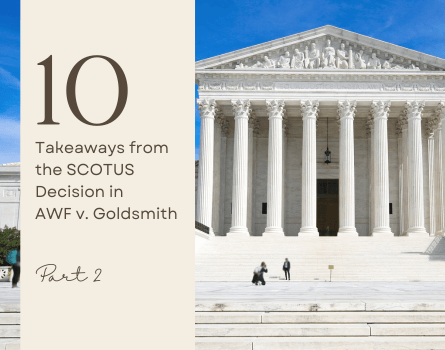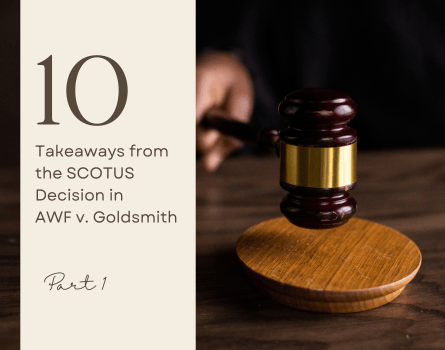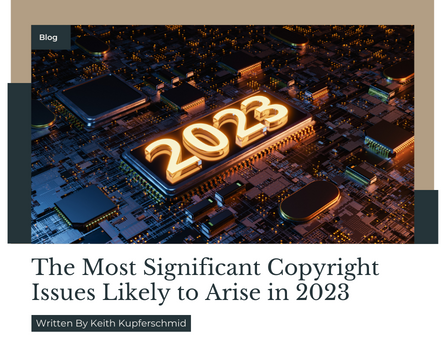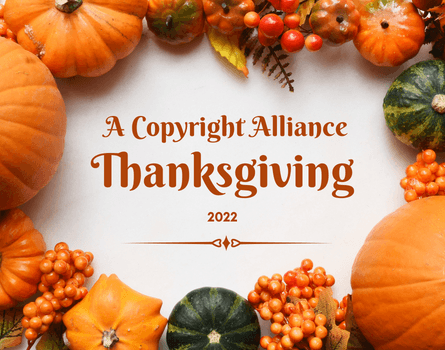Where and how should we draw the line between protectable and non-protectable AI-generated works?
There is little doubt that most of the focus relating to the impact of artificial intelligence (AI) on copyright is on whether use of copyrighted works by AI companies for ingestion/training purposes qualifies as a fair use. But coming in a very close second is the issue of whether works that are created, in whole or in part, using generative artificial intelligence (GAI) may be protected by copyright.
On the spectrum of copyrightability, there is one extreme in which a work is generated with no human creativity and thus not protectable—for example, a photograph produced by a camera triggered by a monkey. At the other extreme is where a work is wholly created by a human and is protectable. Those cases are not difficult.
The more difficult cases are those that lie in the middle of this spectrum, where we encounter complex questions about where to draw the line between an AI-aided work that is and is not protectable by copyright law. Sitting in this gray area are:
- works generated by AI with human assistance, such as when someone makes adjustments to names and phrases in a short story that was initially generated by an AI tool, and
- works created by humans with AI assistance, for example, like when an author using an AI tool to fix the grammar in a short story she wrote.
But even those examples are just two points in a broad spectrum of AI-assisted works that will vary depending on the facts and scope of the interactions between the AI tool and the human creator.
Works Wholly Generated by AI Should Not be Protected by Copyright
The Copyright Clause of the Constitution grants Congress the power “[t]o promote the progress of science and useful arts, by securing for limited times to authors and inventors the exclusive right to their respective writings and discoveries.” The Clause does not support the claim that the Constitution permits copyright protection for non-humans. Central to the Copyright Clause is the concept of creator incentivization, which is not applicable to machines that do not need or comprehend incentivization.
As the U.S. District Court for the District of Columbia recently explained in Thaler v. Perlmutter:
“The act of human creation—and how to best encourage human individuals to engage in that creation, and thereby promote science and the useful arts—was thus central to American copyright from its very inception. Non-human actors need no incentivization with the promise of exclusive rights under United States law, and copyright was therefore not designed to reach them.”
The court’s opinion adopts the Copyright Office’s position (responding to Thaler’s complaint that the Office improperly rejected a registration application where Thaler’s AI machine was named the author of the image in the case) that “the Constitutional purpose of copyright is to incentivize humans to create expressive works” and that “human creativity is the sine qua non at the core of copyrightability, even as that human creativity is channeled through new tools or into new media.” Both the Copyright Office and District Court explain that the history and language of the Copyright Act, Supreme Court precedent, and the Copyright Office Compendium support the position that only human authorship qualifies for copyright protection.
While AI tools have the potential to assist human creativity, much like other creative tools that have come before it, copyright protection for wholly AI-generated material is not desirable as a policy matter. Wholly generated AI material that is based on copyrighted works ingested by AI developers without compensating the creator or obtaining their permission to ingest their works has the potential to supplant the market for the ingested works. Policymakers should be discouraging such activities, not incentivizing them by granting legal protection to material manufactured wholly outside of the realm of human authorship.
Some have suggested that granting copyright protection to AI-generated works is important to incentivize the further development of generative AI systems and technology. However, the prevalent use of AI tools demonstrates that there are already adequate incentives in place. Today, there exist a large number of AI developers and systems, all who offer varieties of GAI tools that are used across a spectrum of creative fields. That number has grown exponentially over the past year and is likely to continue to increase in the coming months and years. Similarly, the number of AI users and customers has expanded significantly. It is clear that no additional incentives related to the copyrightability of output wholly generated by AI are necessary to encourage AI developers and systems to enter the marketplace and prosper.
Established Copyrightability Standards Are Capable of Addressing AI-Generated Material
What about those tough cases that fall in the middle of the spectrum? Attempting to create a bright line rule about how much AI use renders a work unprotectable is extremely difficult. Because of this, it makes little sense to create a bright line rule. Instead, protectability determinations should be made on a case-by-case basis—as has always been the case. The factors for determining copyrightability are well developed and have been articulated and applied throughout copyright law jurisprudence. There is no reason these factors should not continue to be applicable to newer technologies, such as generative AI.
In Feist Publications v. Rural Telephone, the Supreme Court explained that a work of authorship must possess “at least some minimal degree of creativity” to sustain a copyright claim. And in Burrow-Giles Lithographic Co. v. Sarony, the Supreme Court noted that the question of copyrightability is to be determined based on “the existence of those facts of originality, of intellectual production, of thought, and conception on the part of the author.” Finally, in Thaler v. Perlmutter, the district court reiterated that copyright only protects the unique value of human creativity, noting that courts have “uniformly declined to recognize copyright in works created absent any human involvement”.
In determining whether a work generated using AI is copyrightable, these longstanding standards of copyrightability should apply no differently than they do in other contexts. Thus, revisions to the Copyright Act should not be necessary to clarify the human authorship requirement, especially in view of the recent decision of the U.S. District Court for the District of Columbia in Thaler v. Perlmutter granting the U.S. Copyright Office’s motion for summary judgment and confirming that “human authorship is an essential part of a valid copyright claim” and “a bedrock requirement of copyright.”
A Few Words About the U.S. Copyright Office’s Registration Guidance
Last year, the Copyright Office issued guidance on the registration of works that contain AI-generated elements titled Copyright Registration Guidance: Works Containing Material Generated by Artificial Intelligence. In the guidance, the Office explains that applicants have a duty to disclose the inclusion of AI-generated content in a work submitted for registration and to provide an explanation of the human author’s contributions to the work. Other notable requirements are that for AI-generated content, registrants must use the standard application, and in a situation where registration has already been granted (but AI-generated content was not disclosed), the applicant should correct the public record by submitting a supplementary registration.
Unfortunately, despite the Copyright Office’s efforts to provide clarification, somewhat unsurprisingly, the Guidance has left many unanswered questions and resulted in some confusion on how the standards set forth in the guidance will be applied in practice. For example, there are several inconsistencies between the guidance and parts of the Copyright Office Compendium on registration guidelines that must be clarified. For instance, the Compendium says that unclaimable material should be disclaimed when it represents an “appreciable portion” of the whole work, whereas the guidance says that AI-generated content that is more than de minimis should be explicitly excluded from the application. These are two different standards that must be reconciled. In a webinar explaining the Guidance, the Office attempted to define what it meant by de minimis and described how it compared to “appreciable amount,” but unfortunately this raised additional questions.
Use of the de minimis standard to separate material that should be disclaimed from material that should not be is not only confusing but also an inappropriate standard. The term “more than de minimis” is used in other contexts in the law where it does not involve a standard of separable copyrightability. For instance, in the context of joint authorship, a more than de minimis contribution may suffice to constitute joint authorship while not rising to the level of independent copyright protection, and, in the context of an infringement analysis, whether a portion of a work used without authorization is “more than de minimis” may have different implications. Because the de minimis standard varies in different contexts, the Office should not use the term as the standard for determining when it is necessary to disclaim material in a registration application. It would make sense for the Office’s guidance to simply confirm the existing standard articulated in section 621.2 of the Compendium, which explains that “[u]nclaimable material should be disclaimed only if it represents an appreciable portion of the work as a whole.”
The guidance also includes the requirement that registrants must use the standard application when registering a work with AI-generated content, which, among other things, prohibits the use of group registrations and the benefits that flow from them, making it more challenging and economically infeasible for certain creators to register their works with the Office.
Lastly, there is significant concern amongst many in the copyright community about retroactive application of the Copyright Office’s guidance. For creators and organizations with a vast portfolio of registrations, the threat of invalidation or cancellation is a major concern, especially when the guidance on where to draw the line regarding what to disclaim is unclear. Many copyright owners are worried that the new guidance will be misused by overly aggressive litigators to challenge the validity of every copyright registration if they believe AI was used even slightly and was not disclosed, which in turn might make litigation even more expensive than it currently is.
We are encouraged by the fact that the Copyright Office recently indicated in a letter to Congress outlining its next steps addressing issues raised by AI that it will soon publish an update to the Compendium of U.S. Copyright Office Practices. According to the letter, the update will include further guidance and examples relating to the registration of works incorporating AI-generated material and will be subject to a notice-and-public comment process.
Like many issues related to AI, these copyrightability issues will require a certain amount of thoughtfulness and patience while we all get a better understanding of the technology and how that technology applies to current law.
If you aren’t already a member of the Copyright Alliance, you can join today by completing our Individual Creator Members membership form! Members gain access to monthly newsletters, educational webinars, and so much more — all for free! To stay up to date on all things AI and copyright law related, sign up for the Copyright Alliance’s AI Copyright Alert.





